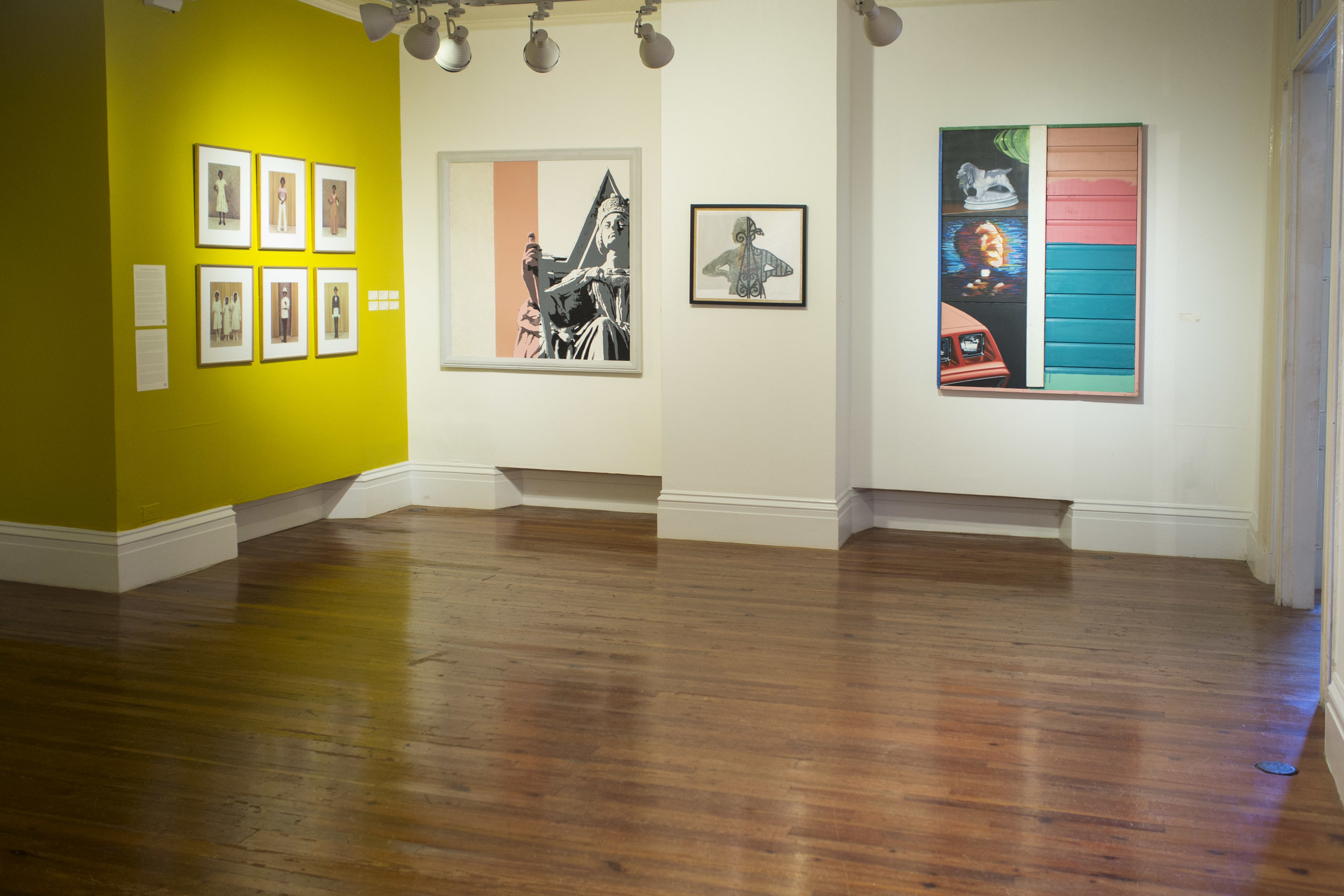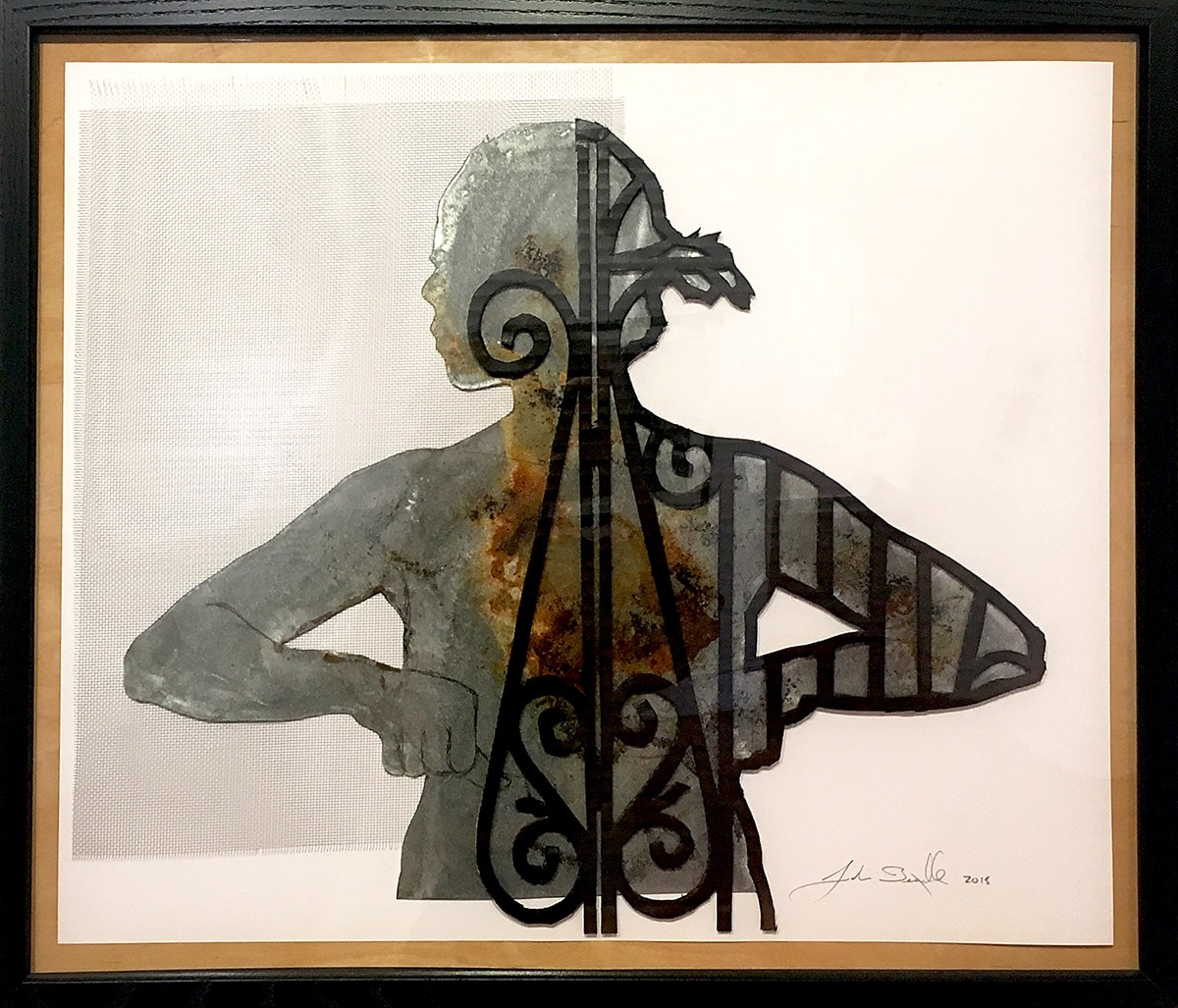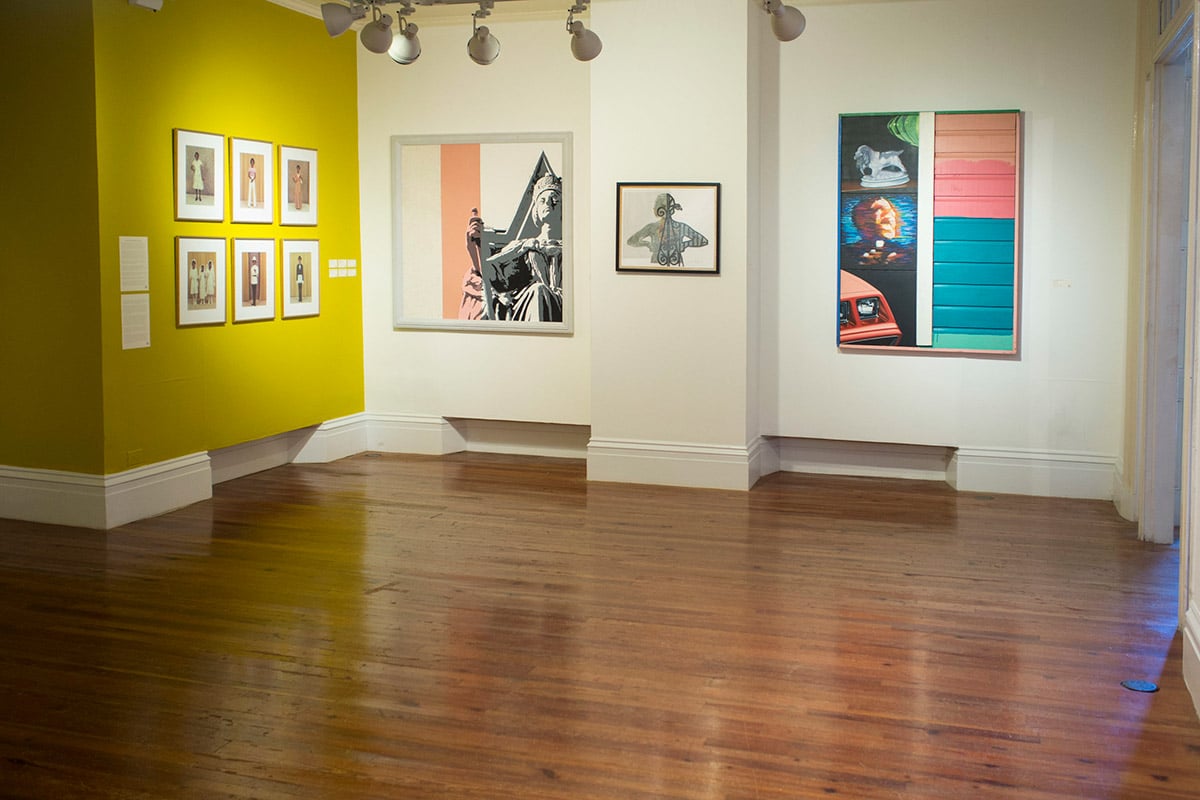
By Natalie Willis
By now, many of us who are denizens of the Bahamian art community can easily recognise the curlicue gate-covered figurations of John Beadle. He’s been a fixture in the art community for some time, but this certainly does not indicate any sense of being stagnant. Beadle shifts between media – painting, sculpture, installation – and the message is often rooted in Bahamian history and culture. The series of cardboard and mixed media assemblages he makes using the patterning of metal gates that are ubiquitous, can be seen all over Nassau and the rest of the country. We are a space that is very much determined by borders – national, personal and private. But who do we block from access? And why?
Beadle, identifying as a Jamaican-Bahamian like so many here – even at the Gallery, there are four Bahamians with Jamaican heritage – is not blind to what access (or lack thereof) looks like, what boundaries can do. Coming of age in a Bahamas where Jamaicans were viewed much the way we view Haitians now, Beadle is very well versed in how to traverse the social boundaries of this space. Though we don’t often acknowledge it for what it is in polite conversation, xenophobia in this country makes the old tourism slogan ‘it’s better in The Bahamas’ become a question of ‘better for who?’

“Proxemics: Personal Space/Commanding Stance” (2015), John Beadle, mixed media collage with metal mesh and cardboard, 21 x 25. Part of the D’Aguilar Art Foundation Collection and currently on view at the NAGB in the current Permanent Exhibition “An Eye For The Tropics”.
After a 7-year hiatus from producing artwork in the 1990s to run Doongalik Studios and build works for Junkanoo (an art form in its own right, if not considered a fine art practice), he embarked on a journey to better understand bush medicine – and ultimately that journey led him back to fine arts. Why then, should he look to work on boundaries? If we take Beadle’s practice to be an investigation of nature, why not of human nature? We are aware of our borders as Bahamians when we think of poachers, and of immigration, but what of the ones we put up around ourselves everyday?
The screen material on the backdrop is a succinct way to make this point. It is something we see everyday, often thought of as a way to keep flies and mosquitoes out, it’s also a way to obscure the view. Beadle has a way of drawing attention to our everyday by making it one step removed from its original context – and by doing so it puts these things up for observation and scrutiny. Whereas the cardboard gate pattern that overlays the top is a very clear marker for this need for inside/outside space, the screen you notice second – one is the hard hand of the domestic boundary, the other is the soft.
We don’t just put our own boundaries up either. As a Junkanooer it is clear in the artist’s mind that the government has also put up boundaries on our most beloved cultural focus as Bahamians, one which it should be noted thoroughly originated as a practice of freedom, as we all learned as children.
“Proxemics: Personal Space/Commanding Stance” (2015) tells us a lot from the title, but also from the time it was made and what that means for us now. We have seen time and time again in the news for the past two years what people do to protect ‘their space’, and the commandeering that goes along with protecting what people feel is theirs – whether its national borders, or perceived rights. This work has only acquired more meaning for us since its creation.

Installation view of “Proxemics: Personal Space/Commanding Stance” (2015)
We can even feel it when we look at it: now when we think of the gender referendum here, the US election that generated rather a lot of talk about one border in particular, the UK Brexit referendum which had much to do with national and more personal ideas of boundaries and space, and, perhaps most pertinently, right now as we face the aftermath of what has been one of the most catastrophic hurricane seasons in history (if not the most) with people displaced and being coined ‘climate refugees’ throughout the region. What does a border mean now? Who are our gatekeepers, and why do we have a gate from our neighbours when our neighbors are our brothers and sisters?
We hear both the most compassionate speech as well as the most vitriolic when its comes to the idea of letting Dominica, who gave us so much from what they had after Matthew devastated us last year, send some of their displaced children to find refuge and to continue their education here. Many wonder why we should share when we have so many other issues on our plate, and that we do, but if we are in a position where we are hurting but able to give and assist those who are hurting far worse than we are, what kind of personal space are we putting up around ourselves in the region? We are, for the first time I believe in a very long time, taking a commanding stance of togetherness and empathy, and there are no borders that can hold in that kind of humanity.